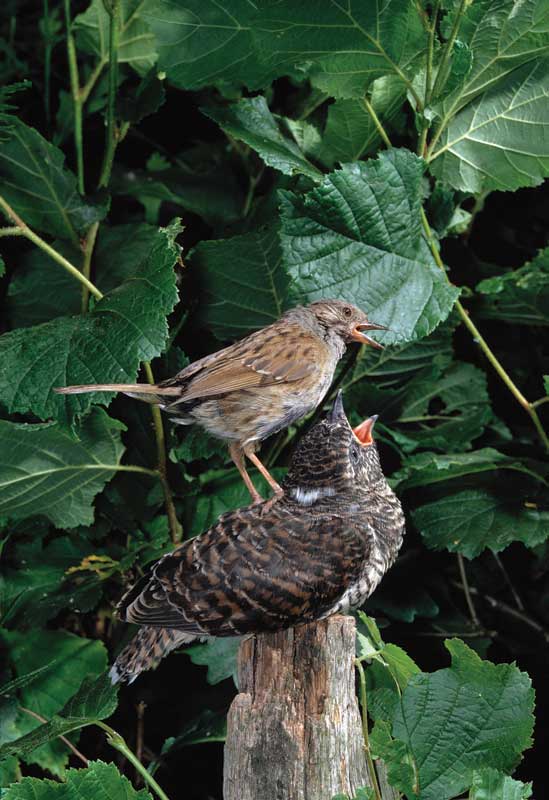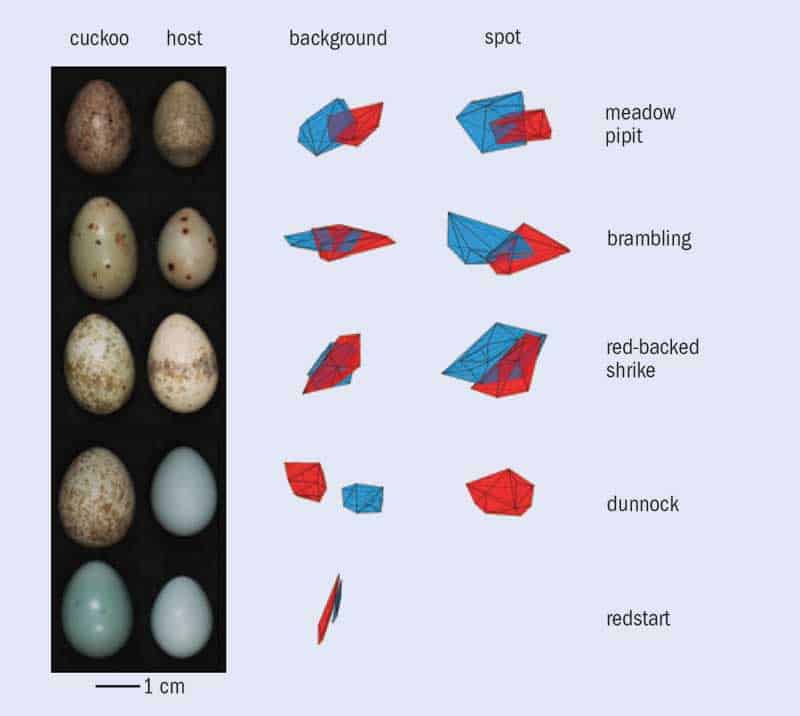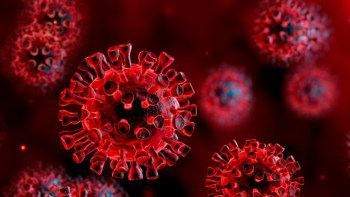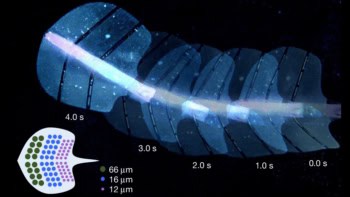It’s hard to get inside another human’s head – let alone a member of a different species – but that’s where physics and computer models help. Liz Kalaugher reports how researchers are visualizing what birds see in order to help work out why they don’t reject intruder cuckoo eggs
Why does your friend accessorize bright-purple curtains with a neon-pink carpet and lime-green cushions? Why did your partner misunderstand when you told them your plans for the evening and why that meant they should do the washing up? And who could possibly not like Marmite? It can be difficult to see another person’s point of view. Imagine how much harder it is to get inside the mind of an animal that sees, hears and smells differently from you and may even sense things – like electric or magnetic fields – that you can’t. Yet that’s what scientists researching animal behaviour must do. Fortunately they have sophisticated physics-based measuring kit and computer models to help.
This approach has solved at least one mystery in the bird world, concerning the common cuckoo. Cuckoos are known for their devious ways. Rather than looking after a clutch of eggs themselves, female cuckoos lay a series of individual eggs in the nests of other birds. Sometimes the involuntary host spots the forgery and ejects the imposter. But the foster parent may well incubate the cuckoo egg along with its own. And when the cuckoo chick hatches it will turf out the host’s eggs or chicks, becoming the sole resident of the nest and receiving all the food the host brings.
When a cuckoo lays an egg in the nest of a brambling (a member of the finch family), that egg matches the – to human eyes – creamy grey-blue colour and large brown spots of the brambling’s own eggs. But races of cuckoo that prefer to invade dunnock nests lay cream eggs speckled with light brown. In our view, these cuckoo eggs are nothing like the dunnock’s own pale-blue eggs already in the nest, yet the dunnock foster parents hardly ever reject these cuckoo forgeries. What is going on? Do the dunnocks – brownish birds about the size of a sparrow – not see the difference that’s so clear to us? Or do they have some other reason for not shoving the intruder egg out of their nest?

“Sometimes [the cuckoo eggs] look very impressive to us but we don’t know how impressive they look to a bird’s eye,” says bird-vision expert Martin Stevens of the University of Exeter in the UK. According to Stevens, our misguided assumption that birds see like humans has held up our understanding of their biology. Instead of using their own senses, vision researchers must turn to technology to get the full picture. “There’s a whole part of their [birds’] world that we miss out on,” says Stevens. “You need a lot of specialist equipment to understand what sort of visual information is available to a bird. It makes it more interesting and more challenging.”
Avian eyes don’t work like ours. We have three types of the photoreceptors known as cone cells that lie in the light-sensitive retina at the back of our eyeballs. Each type contains a pigment that responds to a particular chunk of the visible light spectrum; together they span wavelengths from about 400 nm (violet) to 700 nm (red). Birds go one better. They have cones mostly sensitive to red, green or blue light as we do but also – depending on the species – a cone that responds either to ultraviolet (UV) light, which lies below 400 nm, or to violet light and a little UV light. They’re tetrachromatic to our trichromatic.
Many other animals, including some species of insect, reptile, amphibian and fish, also perceive UV light. Some humans may be tetrachromats too, and able to see more colours than the rest of us. But it’s not clear how these lucky individuals’ extra cones are wired up. Generally, human cones can detect a little UV but they’re not very sensitive. What’s more, the lenses in our eyes block most UV light from reaching our retinas, which means we miss out on a multitude of flower patterns and animal markings that are out of our league. The latest thinking is that we lost our ability to see UV light when our eyes evolved to work better in the dark.
Colouring in
Enough about us. What’s going on with the apparently unobservant dunnock? What does it see when it looks at its nest after a broody cuckoo’s paid a visit? To find out, in 2011 Stevens and colleague Mary Caswell Stoddard, who now studies bird colouration at Princeton University in the US, modelled the vision of this bird and 10 other species that are unwitting hosts to cuckoo chicks.
The pair examined eggs from 248 clutches that each contained one imposter laid by a member of one of the common cuckoo host-races (each race specializes in a target host species). The eggs, taken from the Natural History Museum’s collection in Tring in Hertfordshire, UK, were mainly collected between 1880 and 1910 (it’s now illegal in the UK to take eggs from the wild). Using a spectrophotometer, the researchers illuminated each egg with light spanning 300–700 nm at 1 nm intervals to build up a spectrum of the reflected light. For each egg, they measured the egg’s background colour and a colour spot (if there were any) at the top, middle and bottom of the shell.

These reflectance spectra showed which wavelengths hit the foster-parent birds’ eyeballs. So far, so good – these wavelengths enter our eyes too and give us our own view of the egg’s colour. But this isn’t the full picture. What the bird sees depends on the sensitivity of its cones and of its rods (which work well for dim light but don’t see colour) to different wavelengths of light. And that sensitivity is different from ours. The researchers needed a bird’s-eye view of the wavelengths their spectrophotometer had recorded.
Unfortunately, biologists do not yet fully understand the visual system of the dunnock. The researchers therefore assumed that the foster-parent birds have the same sensitivity to different colours as the blue tit – one of a handful of well-studied species that can serve as a proxy. Other vision scientists have measured the sensitivity of the blue tit’s cone cells by shining narrow beams of light onto the visual pigment inside the cells and monitoring how much reflects back. “From doing that and related things, you can calculate how much light each type of photoreceptor absorbs in terms of different wavelengths,” Stevens says, adding that modern genetic techniques can also reveal the sensitivity of the cone cells by showing which pigment proteins are inside.
Then it was time to get mathematical. Knowing which wavelengths bounce off the egg onto a bird’s retina, which types of cone it has, and how sensitive they are to different colours, Stoddard and Stevens modelled what the bird sees. They represented its picture of what each egg looks like with a 3D shape inside “avian tetrahedral colour space” (figure 1). Mapping colours in such a space takes us – according to Stoddard – “one step closer to understanding the rich visual world birds experience, which includes the UV dimension”.
Bounded by a tetrahedron, each corner of this space represents the colour to which one of the bird’s four types of cones is most sensitive. A point completely in the middle of the tetrahedron would stimulate all four cones equally and appear grey or white, while a point at, say, the red corner would only stimulate the red cones and would look red.
The key to this experiment is that if the colour shape representing the bird’s view of its own egg overlaps in avian colour space with the shape representing its picture of a cuckoo egg, it’s likely that the bird can’t easily tell the difference. “Our findings reveal new information about egg mimicry that would be impossible to derive by the human eye,” write Stoddard and Stevens in a 2011 paper in Evolution (65 2004). The bird commonly known as the redstart, for example, has blue eggs, and the cuckoo version looks similar to a human but not to a redstart. In avian colour space, the shapes representing the eggs do not intersect, instead lying right next to each other.
Mimicry mystery
Even allowing for bird vision, Stoddard and Stevens found that cuckoos were doing a much better job of colour-matching the eggs of some host birds than others. The background colour of cuckoo eggs in brambling nests, for example, overlapped in avian colour space with that of brambling eggs by 30%. For the dunnock, the shapes for the background colour of a dunnock egg and a cuckoo egg laid in a dunnock’s nest did not intersect at all and there was a fair amount of space between them, suggesting a total lack of colour mimicry on the part of the cuckoo. In other words, the cuckoo and dunnock eggs produce totally different patterns of photoreceptor stimulation in a dunnock foster parent’s eye – so the bird should definitely be able to spot the forgery and do something about it.
The result showed that the dunnock sees what’s in front of its beak but it doesn’t take any action. Why, wondered Stoddard and Stevens, doesn’t the bird heave the fake out of the nest, saving its own offspring from an untimely end once the cuckoo chick hatches and does away with the dunnock’s eggs or chicks?
Stevens and Stoddard weren’t able to answer this question immediately but they did spot a trend in their colour-space results that helped solve the puzzle: foster parents from species that reject more cuckoo eggs tend to encounter fake eggs that look more like their own. So cuckoo races that choose these picky host parents have upped their game in this evolutionary arms race and now produce eggs highly similar to those already in the nest to avoid their trickery being detected. If the foster parent is less proactive, on the other hand, the cuckoo race that lays eggs in that species’ nests makes less effort.
“Cuckoos have an egg closer in both colour and pattern to the hosts when the host is more likely to reject,” says Stevens. “The dunnock, one of the most common hosts for the cuckoo, almost never rejects eggs and the cuckoo’s egg looks nothing like a dunnock’s.”
The redstart, whose own eggs and the cuckoo versions lay next to each other in avian colour space, rejects about 30% of imposters. The moderately picky meadow pipit, rejecting 18–48% of cuckoo eggs, shares about 15% colour space overlap with its cuckoo eggs. Eggs of the fusspot brambling, on the other hand, which rejects 90% of cuckoo eggs, have about 30% colour-space overlap. Meanwhile, cuckoo eggs laid in the nest of red-backed shrikes – a bird so fussy that it rejects almost all artificial cuckoo eggs – have the best background colour match of all, with a colour overlap of nearly 60%.
“It’s an exciting time because these vision models have really changed the way people think about brood parasites, and helped us to understand the information birds are using to make decisions when rejecting eggs,” Stevens says.
Fake it till you make it
It could be that the dunnock is only just out of the starting gates of the evolutionary arms race and hasn’t yet had time to work out what’s going on. (It’s tempting here to shoehorn in that old maxim: which came first, the cuckoo or the egg?) “Another species perhaps won the arms race and became so good at spotting foreign eggs that the cuckoo was forced to switch and find a new victim,” Stevens says. And the cuckoo picked the dunnock. But because this bird is so poor at spotting fakes, there’s no incentive for these cuckoos to get better at disguising their eggs. The brambling and its cuckoo, on the other hand, may have been battling for much longer, with the brambling upping its fussiness in defence of its own young and the cuckoo improving its pattern and colour matching in retaliation, over and over again.
Although this research has provided insights into the cuckoo egg-colour-faking mystery, others are yet to be resolved. Even if an egg forgery is a good colour match, why do foster parents seemingly fail to notice that it is larger and a different shape from their own? Perhaps it’s extra risky to reject a particularly big egg as it contains even more resources that might belong to the parent. But biologists don’t really know. When it comes to eggs, they’ve still got a lot on their plate.
Polarized vision

How birds see is not the only vision puzzle in the natural world that’s been held back by our assumption that animals see the way humans do. One of the biggest challenges in biology is to understand more about many animals’ uncanny ability to perceive polarized light differently from how they see non-polarized light. Light from the Sun streams across space in entirely unpolarized form, but polarizes when it scatters off air molecules or larger particles, such as dust or smoke, in the atmosphere.
Even the humble ant does a much better job at detecting this polarization than our feeble efforts. When it comes to finding food, many species of ant use their antennae to track trails of pheromones – chemicals laid by other ants – to get from their nest to a food source and back. Out in the deserts of North Africa, however, where food is scarce, the pheromone trails fizzle out fast in the heat. Some species of desert ant therefore use the position of the Sun – along with sunlight that’s become polarized as it scatters in the atmosphere – to calculate in which direction they’ve been travelling. While their outward journey looks like a ragged ball of string, they take a straight bee-line back home, indicating they know exactly which direction to go.
Experiments in the late 1940s by the future Nobel-prize-winning zoologist Karl von Frisch revealed that bees also use polarized light to work out directions. By placing bees in a dark hive and letting them see just a small patch of Sun-free sky, von Frisch showed that polarized light holds the key to the strange “waggle dance” that bees perform on a honeycomb to tell their hive mates the direction and distance to a food source.
We now know that flies and beetles detect polarized light too, as do other insects, spiders and a heap of aquatic animals from octopus and cuttlefish to mantis shrimp. For animals, polarized light is a vital tool for everything from navigating their world to spotting predators, camouflaging themselves and communicating. It’s just a pity we can’t see what they can.




